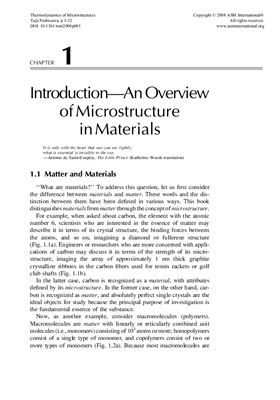ASM Inteational, 2008, 295 pages
This information packed text and reference book introduces mathematical models for describing microstructural phenomena. Thermodynamics of Microstructures is the English translation of a popular Japanese text.
The teaching method of the book is enhanced with solved problems. Each chapter has exercises complemented with notes, hints, and answers, and references important literature.
This solid background in computational thermodynamics will allows the material scientist and material designer to use computational methods to develop new materials by modeling phase equilibia, molecular structure, and dynamics.
Research scientists and engineers with a background similar to that of a senior level materials science student will find it useful in industry and for academic research.
Main Features
Theoretical basis for understanding microstructures of solids
Thermodynamic approach to phase equilibria and interfaces
Diffusion laws and mechanisms
Basis for computational thermodynamics
Concepts illustrated with over 180 figures
Concepts reinforced with exercises, some containing hints and answers
Chapters include enrichment materials
This information packed text and reference book introduces mathematical models for describing microstructural phenomena. Thermodynamics of Microstructures is the English translation of a popular Japanese text.
The teaching method of the book is enhanced with solved problems. Each chapter has exercises complemented with notes, hints, and answers, and references important literature.
This solid background in computational thermodynamics will allows the material scientist and material designer to use computational methods to develop new materials by modeling phase equilibia, molecular structure, and dynamics.
Research scientists and engineers with a background similar to that of a senior level materials science student will find it useful in industry and for academic research.
Main Features
Theoretical basis for understanding microstructures of solids
Thermodynamic approach to phase equilibria and interfaces
Diffusion laws and mechanisms
Basis for computational thermodynamics
Concepts illustrated with over 180 figures
Concepts reinforced with exercises, some containing hints and answers
Chapters include enrichment materials

